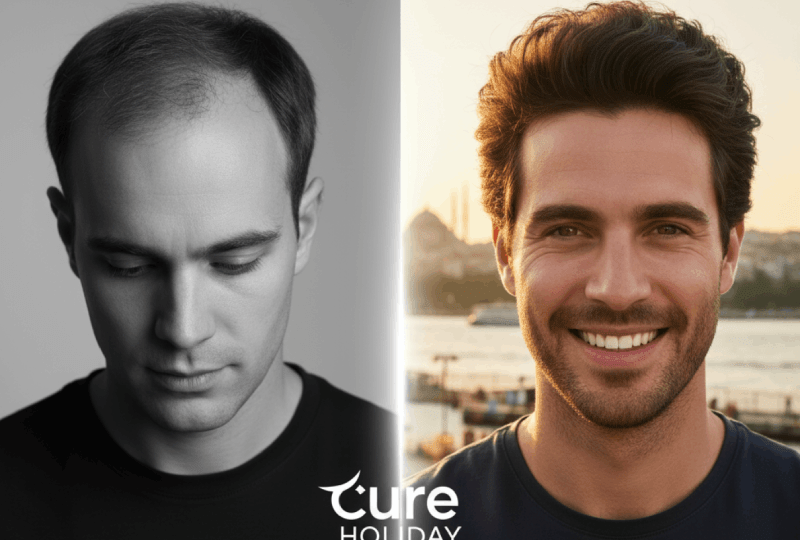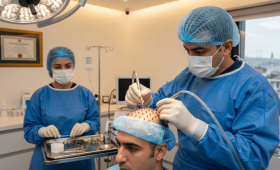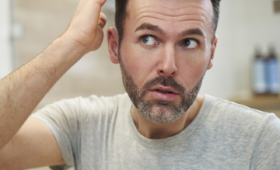What financing packages are available?
Hair transplant clinics generally offer installment payment plans through contracted banks or credit cards. A common option is 6 to 9 interest-free installments. Some centers may collaborate with financing institutions that provide medical or aesthetic loans to allow patients to benefit from longer-term, structured payment plans. These packages are designed to divide the total cost into more manageable segments.
Alternative Payment Options
Aside from installment options, the most common alternative form of payment is cash. Clinics often provide additional discounts or preferential pricing for cash payments. Another method is a single lump-sum payment made using credit cards from all banks. Furthermore, some specialized clinics may rarely offer more flexible choices such as promissory notes or in-house, interest-free payment plans.
Manchester Hair Transplant in Installments
The clinics you choose for your hair transplant in installments in Manchester will determine the cost and installment amounts. However, it’s important to note that if you choose a hair transplant in Turkey, the down payment you make in Manchester will cover the entire treatment. Many clinics in Manchester offer a 1000 pound down payment and the remaining payment in installments. However, you should know that the total cost of flying to Turkey, staying in Turkey, vacationing, and receiving treatment will be 1000 pounds. This means that instead of expensive treatments in Manchester or other countries and cities, you can take advantage of both vacation and treatment packages by choosing Turkey.
What Is Hair Transplantation And How Is It Performed?
Hair transplantation is a surgical procedure typically applied to individuals experiencing permanent hair loss. In this procedure, healthy hair follicles (grafts) resistant to shedding, taken from the back and sides of the head, are transplanted to bald or thinning areas. The most popular methods are FUE (Follicular Unit Extraction) and DHI (Direct Hair Implantation), both performed under local anesthesia. A detailed analysis is performed before the procedure, and a personalized hairline is determined. Proper planning and sterile conditions are of vital importance for a successful outcome.
Why Is Turkey Preferred For Hair Transplantation?
Turkey has become a globally recognized center for hair transplantation. The main reasons for preference include the presence of modern facilities utilizing state-of-the-art equipment and highly experienced teams specializing in this field. Furthermore, offering much more affordable and competitive prices compared to those in Europe and North America is a major drawing factor. Turkey, combining quality service with economic conditions, also offers the opportunity to merge the treatment process with a comfortable experience.
Am I A Suitable Candidate For Hair Transplantation?
Suitability for hair transplantation depends on various factors such as the individual’s hair loss type, the density of hair in the donor area, and overall health status. Generally, individuals over 18, with a sufficient number of hair follicles in the donor area, and without chronic health problems are considered suitable candidates. It is also crucial that the hair loss has become permanent and the shedding pattern has stabilized. The most accurate assessment can be made after a detailed preliminary examination and hair analysis.
What Is The Difference Between FUE And DHI Methods?
The FUE (Follicular Unit Extraction) method involves the single-by-single collection of hair follicles, followed by the stage of opening channels and implantation. DHI (Direct Hair Implantation), on the other hand, allows the simultaneous opening of channels and implantation immediately after the hair follicles are collected using a specialized pen (Choi Implanter). DHI stands out as a less traumatic method that allows for denser implantation, while FUE is generally preferred for transplantation in larger areas.
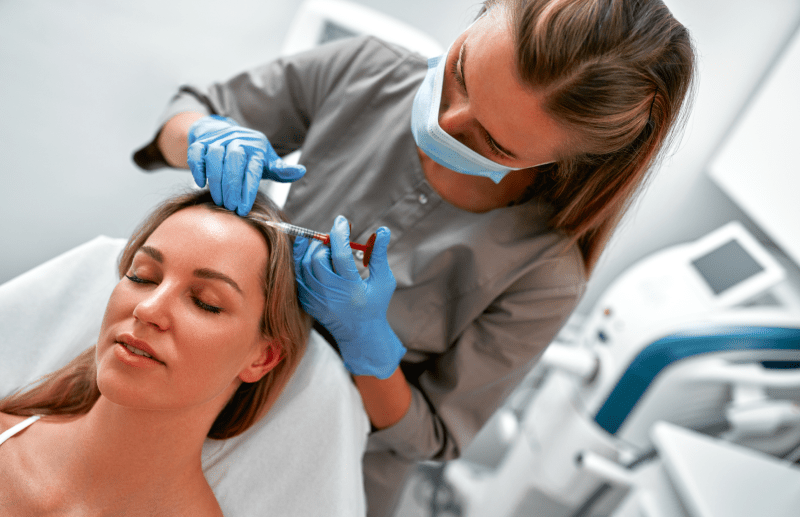
How Long Does The Hair Transplant Procedure Take?
The duration of the hair transplant procedure varies depending on the number of grafts to be transplanted and the method used. An average FUE procedure can last between 6 and 8 hours, including the stages of graft harvesting, channel opening, and implantation. More delicate methods like DHI may take slightly longer. Short breaks are given at regular intervals during the procedure to ensure the patient remains comfortable. A longer duration often indicates that the procedure is being performed with meticulous care.
What Is The Recovery Process Like After Hair Transplantation?
The recovery period is usually critically important during the first 10 days. Mild redness, scabbing, and swelling may be observed in the transplanted area during the first few days. The donor area heals faster. The first wash is generally performed at the clinic 2-3 days after the procedure, using special lotions. Scabs fall off within approximately 7-10 days. Strictly following these instructions is important for complete healing and a return to normal life.
When Will The Transplanted Hair Grow?
The growth cycle of transplanted hair consists of three main phases. About 2-4 weeks after the transplant, a process called shock loss begins, and most of the transplanted hairs fall out. This is a normal and expected situation. New and permanent hairs begin to emerge approximately 3-4 months after the shedding. While 60-70% of the hair is seen by the 6th month, the final result may require waiting between 12 and 18 months.
Are Hair Transplant Results Permanent?
Yes, hair transplant results are permanent. This is because the transplanted hair follicles are usually taken from the nape area, which is genetically resistant to hair loss. These follicles retain the same characteristic even after being transplanted to their new location and will not fall out throughout life. However, shedding of other existing hair may continue due to age or genetics. In this case, an additional future transplant procedure may be considered.
What Are Hair Transplant Prices?
Hair transplant prices in Turkey can vary significantly depending on the method used (FUE, DHI, Sapphire FUE), the number of grafts to be transplanted, and the contents of the package offered (accommodation, transfers, medications, etc.). While prices are generally much more competitive than in Western countries, priority should be given to the clinic’s experience and hygiene standards rather than focusing solely on the price. The more comprehensive the package content, the more the cost may increase.
What Should I Pay Attention To Before Hair Transplantation?
There are several important points to consider before a hair transplant. It is important to stop consuming cigarettes and alcohol at least one week before the procedure, discontinue blood-thinning medications (with doctor’s approval), and reduce caffeine intake. It is recommended to wash your hair one day before the procedure and arrive clean. Choosing comfortable clothing with buttons or zippers on the day of the procedure will help you dress and undress without touching your head.
Is Pain Felt During The Procedure?
Since hair transplantation is performed under local anesthesia, no pain or discomfort is felt during the procedure itself. A brief moment of discomfort may be felt during the anesthesia application, but this passes very quickly. Some clinics aim to minimize this initial discomfort by using needleless anesthesia devices (comfort-in). Comfort is maintained with painkillers provided for mild soreness after the procedure.
When Can I Wash My Hair After Hair Transplantation?
The first wash is generally performed under the clinic’s supervision and with a special technique 2 or 3 days after the transplant procedure. This wash is carried out gently using special lotions to avoid damaging the transplanted area. Detailed instructions will be provided at the clinic for the washes you will perform at home in the following days. It is necessary to strictly follow the washing instructions during the first 10-15 days until the scabs are completely shed.
Does The Donor Area Heal Completely?
The donor area, the back of the head from which hair follicles are harvested, generally heals very quickly. Since the follicles are taken one by one in the FUE method, no stitch marks are formed; only small, dot-like scabs appear. These scabs fall off within a few days, and the area is largely healed within approximately 10-14 days. As the hair grows, the thinning in the areas where the follicles were harvested becomes virtually unnoticeable, regaining a normal appearance.
What Is Shock Loss And When Does It Occur?
Shock loss is a natural process after hair transplantation where the transplanted hairs temporarily shed. It begins approximately 2 to 4 weeks after the transplant and can last for several weeks. This is related to the hair follicles entering a resting phase due to trauma and changes in nutrient supply. Shock loss does not mean the follicles are dead; only the hair shaft sheds, and the follicles rest and prepare to produce stronger new hair strands.
How Should Transplanted Hair Be Cared For?
Caring for the transplanted hair is of great importance, especially in the first months. It is necessary to use the special shampoos and lotions recommended by the clinic, avoid direct sunlight and strenuous physical activities for the first few weeks. When combing the hair, it is important to be gentle and avoid pressing on the transplanted area. Regular use of vitamins and supplements recommended by the doctor will support the strengthening and rapid growth of the follicles.
Can I Do Sports After Hair Transplantation?
It is necessary to take a break from sports and strenuous exercises after a hair transplant. All activities that may cause sweating and head trauma must be absolutely avoided for the first 10 days after the procedure. Non-strenuous exercises like light walking can generally be resumed after 10 days. High-intensity sports such as weightlifting, football, basketball, and swimming are permitted after at least one month.
What Is Included In Hair Transplant Packages In Turkey?
Hair transplant packages in Turkey usually offer comprehensive and all-inclusive options. A standard package includes the transplant procedure itself, accommodation (in luxury hotels), airport-clinic-hotel transfers, post-operative medications, and special shampoo/lotions. Furthermore, pre-operative blood tests and post-operative check-ups are also part of the package. These comprehensive services aim to meet all the needs of international patients.
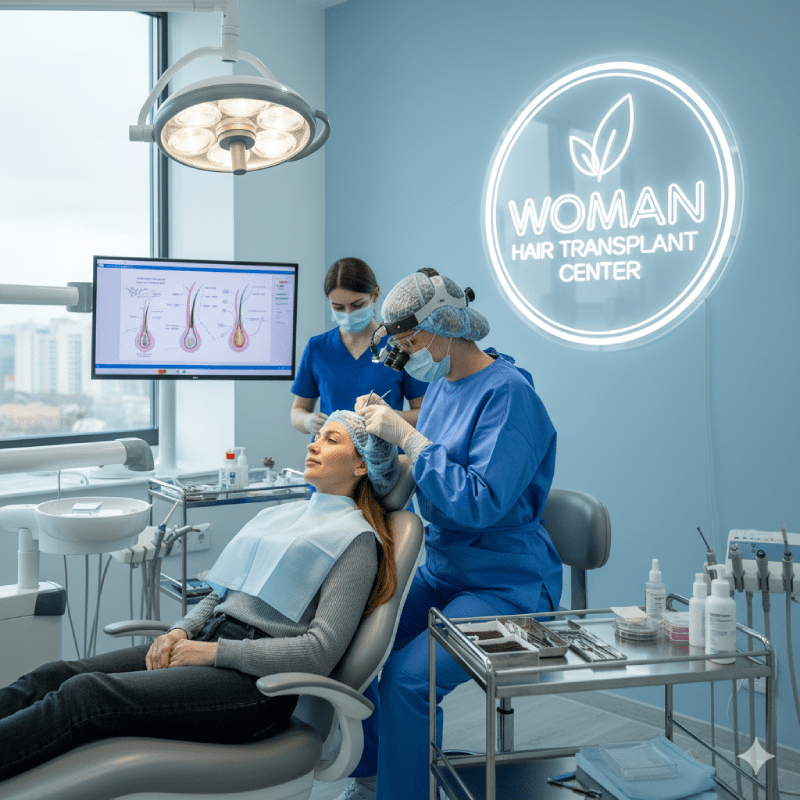
How Many Grafts Do I Need For Hair Transplantation?
The number of grafts required depends on the degree of the individual’s hair loss, the size of the bald area, and the density of the donor region. This is determined by a detailed analysis using the Norwood scale. While 3000-4000 grafts may be sufficient for moderate hair loss, 5000-6000 grafts or more may be necessary for advanced stages of hair loss. The number of grafts should be personalized to achieve the best result.
What Is The Hairline Design Process Like?
Hairline design is one of the most crucial and artistic steps in hair transplantation. To achieve a natural and aesthetic result, this line is determined in accordance with the patient’s face shape, age, and the movement of the forehead muscles. When determining the hairline, the patient’s expectations are combined with the surgical team’s experience. A natural transition line, suitable for the patient’s character, is created, avoiding hairlines that are too low or look artificial.
Is Sexual Intercourse Forbidden After Hair Transplantation?
It is recommended to avoid activities that raise the pulse and blood pressure, including sexual intercourse, for a period after hair transplantation. Increased blood pressure can cause bleeding or displacement of the grafts in the transplanted area. Generally, it is advised to abstain from sexual intercourse for the first 7 to 10 days. During this period, the grafts settle well, and the risk is reduced.
Can I Go Out In The Sun After Hair Transplantation?
The transplanted area becomes very sensitive to direct sunlight after hair transplantation. It is strictly necessary to avoid exposure to direct and prolonged sunlight for the first one month. Sun rays can lead to staining and pigmentation problems in the transplanted area. It is recommended to use protective accessories that do not put pressure on the transplanted area, such as a hat or helmet, when going outdoors.
When Can I Start Consuming Alcohol And Cigarettes After Hair Transplantation?
The consumption of alcohol and cigarettes should be strictly limited before and after the procedure as it negatively affects the healing process. Smoking narrows the blood vessels, reducing blood flow and oxygen transport to the transplanted follicles, which lowers the survival rate of the grafts. Alcohol can also thin the blood. Taking a break from the consumption of these substances for at least 10 days, and ideally one month, will enhance the quality of healing.
Might A Second Hair Transplant Procedure Be Necessary?
A second hair transplant procedure may be necessary due to the size of the bald area in the initial operation or future hair loss. If hair loss continues in different areas after the first procedure or if the patient requests higher density, a second transplant can be performed. For a second procedure, it is mandatory that the donor area can provide sufficient and quality grafts, and at least 1 year must have passed since the first transplant.
What Happens If Hair Transplantation Fails?
The success rate of hair transplant operations is quite high, but rarely the expected results may not be achieved. In the event of failure, the reason why the initial transplant failed is usually analyzed. If the donor area is suitable and the patient is medically eligible, a corrective revision operation may be planned. It is important for the patient to follow all instructions and choose the right clinic to maximize success.
Is There An Age Limit For Hair Transplantation?
Generally, the minimum age limit for hair transplantation is considered to be 18, but ideally, the mid-20s are preferred. The reason for this is that the hair loss pattern may not be fully established at a young age, and shedding might continue after the transplant. The upper age limit depends on the person’s general health status and the quality of the donor area; it can be applied to individuals of all ages without chronic health problems.
When Can I Get A Haircut After Hair Transplantation?
It is expected that the hair will grow after the transplant, but there is no need to rush the first haircut. Hair in the transplanted area can be cut with scissors after approximately one month. For trimming and full shaving with tools like clippers or a razor, waiting at least six months is advised. This period is important for the complete strengthening of the transplanted follicles.
What Medications Should Be Used After Hair Transplantation?
After a hair transplant, antibiotics, painkillers, and anti-edema medications to reduce swelling are generally prescribed to prevent the risk of infection. Additionally, special vitamin supplements or biotin pills may be recommended to support the hair follicles and speed up the growth process. It is important for patients to use the prescribed medications regularly and not to start a different medication without consulting their doctor.
Which Season Is More Suitable For Hair Transplantation?
Hair transplantation can be safely performed in any season of the year. However, each season has its own advantages and disadvantages. During the summer months, more attention should be paid after the first wash due to increased heat and sweating, while hat usage may be more comfortable during the winter months. The important thing is to adhere to the rules of avoiding sun and excessive sweating, regardless of the season.
How Should Travel Planning Be Done?
Travel planning for international patients usually covers a period of 3 days. The plan is made for arrival and consultation on the first day, operation on the second day, and the first wash and check-up followed by departure on the third day. It is important to sit in a comfortable position on the plane or in the vehicle so as not to put pressure on the head area. Transfers are usually included in the clinic packages, which simplifies the process.
What Factors Affect Hair Transplant Success Rate?
Many factors affect the success of a hair transplant. The most important among these include the experience of the surgical team, the quality of the technology and equipment used, the density of the donor area, and minimizing the time grafts spend outside the body (viability period). Furthermore, the patient’s diligent adherence to post-operative care instructions directly affects the success rate.
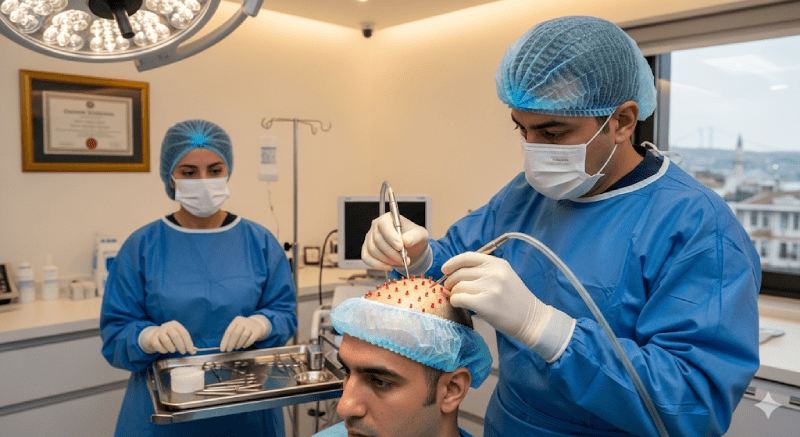
Is It Normal To Feel Itchy After Hair Transplantation?
Yes, a feeling of itching in both the donor and transplanted areas after a hair transplant is quite normal. Itching is part of the healing and scab-shedding process. However, it is strictly forbidden to scratch the itchy areas with nails or harshly, as this can damage the grafts and lead to infection. This sensation can be alleviated by gently tapping or by using special lotions recommended by the clinic.
Is The Hair Transplant Procedure Covered By Insurance?
Hair transplantation is generally considered a cosmetic and aesthetic procedure, so it is not covered by most private and public insurance policies. However, in very specific medical circumstances, such as hair loss resulting from a burn or accident, special conditions for insurance coverage may come into effect. It is best to contact your insurance company for such exceptional cases.
When Does Swelling And Edema Go Away After Hair Transplantation?
The appearance of edema (swelling), especially around the forehead and eyes, is common after a hair transplant. This occurs as the anesthesia fluid descends due to gravity. Edema usually peaks on the 3rd day after the procedure and then begins to decrease rapidly. Sleeping with the head elevated and using the special band recommended by the clinic helps minimize swelling, which typically disappears completely within 5 to 7 days.
Does The Transplanted Hair Look Natural?
Achieving a natural look is the most important goal of hair transplantation. In a successful result, the direction, angle, and hairline of the transplanted hairs should be compatible with the patient’s original hair structure. Especially the creation of the frontal hairline with a natural, scattered transition, instead of a straight line using single grafts, is a critical factor that maximizes the natural appearance of the transplant.
When Can I Wear A Hat After Hair Transplantation?
Wearing a hat after a transplant is important to protect the transplanted area from the sun and external factors, but the right timing and type of hat must be chosen. During the first 10 days, a loose and soft hat that does not press on the grafts (e.g., a surgical cap) should be used. It is recommended to wait at least 1 month for tight, narrow, or head-pressing hats (e.g., baseball caps).
Is PRP Treatment Necessary After Hair Transplantation?
PRP (Platelet-Rich Plasma) treatment is often recommended as an additional therapy to support hair transplant results and speed up the healing process. PRP involves injecting plasma, obtained from the patient’s own blood and enriched with growth factors, into the transplanted area. This can enhance the nourishment of the transplanted grafts, helping them to anchor more strongly and grow faster.
Can Hair Transplantation Be Performed On Long Hair?
Yes, hair transplantation can be performed on long hair (non-shaven FUE or DHI), but these methods are generally more suitable for smaller areas where a limited number of grafts will be transplanted. This method allows patients to return to their social lives faster after the operation. However, for large areas requiring the transplantation of many grafts, complete shaving of the donor area is still considered the most effective and efficient method.
What Should Be The Sleeping Position After Hair Transplantation?
The sleeping position is very important for the first 7 to 10 days after hair transplantation. To prevent any pressure on the transplanted grafts, patients must sleep on their backs with their heads elevated (in a semi-sitting position). Using a neck pillow helps to keep the head stable and prevent the transplanted area from touching the pillow. This is vital for ensuring the safety of the grafts.
What Foods Should Be Consumed After Hair Transplantation?
Nutrition after a hair transplant plays an important role in supporting the healing process. A diet rich in protein, vitamins, and minerals is recommended to strengthen the hair follicles. Foods containing B vitamins (Biotin), zinc, iron, and Vitamin C are particularly beneficial. Drinking plenty of water and avoiding processed foods will positively affect both general health and transplant results.
Can Massage Be Done After Hair Transplantation?
Massage to the transplanted area is strictly not recommended in the first months after hair transplantation. This can cause newly transplanted grafts to shift and be damaged. Even during the first washes, very gentle movements should be used. Massage to the donor area can be very lightly applied, usually after the scabs have fallen off, to increase blood circulation and speed up healing.
Can Hair Be Dyed After Hair Transplantation?
Hair dyeing and similar chemical applications should be avoided for a period after the transplant procedure. Chemical dyes and lighteners can damage both the sensitive skin in the transplanted area and the new, fragile hair follicles. It is generally recommended to wait at least 3 to 6 months before dyeing the hair. You must always consult the expert team at your clinic before proceeding with dyeing.
What Are The Hair Strengthening Treatments After Hair Transplantation?
Various treatments can be applied after hair transplantation to support the strengthening of the transplanted follicles and existing hair. The most common ones are PRP (Platelet-Rich Plasma), mentioned above, and Hair Mesotherapy, where vitamins and minerals are injected into the scalp. These treatments contribute to the growth of thicker, denser, and healthier hair by enhancing the nourishment of the hair follicles.
